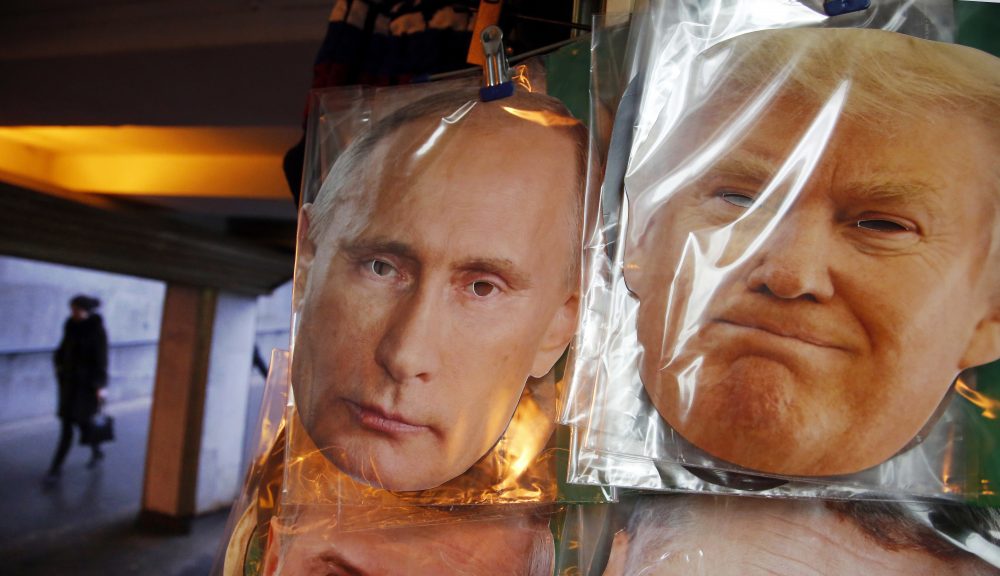Advertisement
The Deep Soviet Roots Of The Russian Election-Hacking Campaign

COMMENTARY
The release on January 6 of an unclassified version of the U.S. Intelligence Community’s report describing efforts by Russian security services to influence last year’s U.S. presidential campaign in favor of Donald Trump evoked a sense of déjà vu. Despite the advent of cyberwarfare, the Russian government’s attempts to sway the U.S. election in 2016 were strikingly reminiscent of Soviet “active measures” during the Cold War.
The report says that Russia’s use of cyberwarfare and other tactics in 2016 was “the most recent expression of Moscow’s longstanding desire to undermine the U.S.-led liberal democratic order.” This is undoubtedly true, but the report goes on to claim that “these activities demonstrated a significant escalation in directness, level of activity, and scope of effort compared to previous operations.” The notion that Russian intelligence services’ actions in 2016 were unprecedented in scale reflects an inadequate understanding of history.
The reality is that the two main Soviet intelligence and security agencies — the KGB and GRU (military intelligence) — kept up a vigorous campaign to meddle in U.S. politics and discredit the United States. The “active measures” used by the KGB and GRU during the Cold War were remarkably similar to the tactics and goals of Russian intelligence agencies in 2016. The basic methods were simply adapted for the cyber age.
The “active measures” used ... during the Cold War were remarkably similar to the tactics and goals of Russian intelligence agencies in 2016.
The KGB’s First Main Directorate (the foreign intelligence directorate) included a special unit known as Service A, which orchestrated a wide range of mostly nonviolent measures to destabilize the United States and undermine its influence in the world. Service A, formed in the 1950s, almost immediately set to work spreading disinformation, producing forgeries, transmitting propaganda, and disrupting U.S. and Western public diplomacy.
The unit attempted to spread disinformation that supposedly linked the U.S. government to JFK’s assassination. The KGB funded the publication of conspiracy-mongering books by Western authors and forged documents and letters that tied the assassin, Lee Harvey Oswald, to the CIA and FBI.
Service A also sought to discredit high-ranking U.S. officials such as Lyndon Johnson and J. Edgar Hoover and key figures outside the government, notably Martin Luther King Jr. The Soviet unit forged homophobic letters to the editor of U.S. newspapers claiming that Hoover was a gay transvestite who was seeking to establish a “network of like-minded homosexuals” within the FBI. These baseless allegations continue to enjoy credence in some circles even now.
King came under attack from the KGB, in part because he declined to embrace a Communist agenda for the civil rights movement, and in part because his hard-won achievements threatened one of Service A’s main selling points. The entrenchment of racial segregation and racial discrimination in the United States had been a severe burden on U.S. foreign policy, belying the government’s claims to be promoting democracy. Many State Department officials came to support the civil rights movement for this reason, sensing that an end to segregation would improve America’s image abroad.
For the KGB, however, the calculus was the opposite. Soviet propaganda had long highlighted the iniquities of racial discrimination in the United States, and Soviet officials were well aware of the potency of this issue in tarnishing U.S. leadership in the world. Congressional passage of civil rights legislation, the KGB feared, would eliminate one of the Soviet Union’s major lines of attack. As Soviet officials became increasingly worried about the success of the civil rights movement, Service A used forgeries to try to discredit King and other civil rights activists, depicting them as “Uncle Toms” who were secretly colluding with the government. The unit also fabricated documents and spread disinformation that President Johnson had taken secret steps with King’s implicit approval to ensure the continued subordination of blacks.
In later years, the KGB tried to stir up racial tensions in New York City by sending inflammatory forged publications to black activist groups and by setting off a bomb in a “Negro section of New York” and blaming it on the militant Jewish Defense League. Service A resorted to similar provocations throughout the 1970s and well into the 1980s, viewing race relations as the issue most likely to destabilize the U.S. political system.
At least twice, the Soviet Union secretly tried to influence U.S. presidential elections.
At least twice, the Soviet Union secretly tried to influence U.S. presidential elections. In 1968, the Soviet Politburo strongly favored the Democratic candidate, Hubert Humphrey, out of fear of the Republican nominee, Richard Nixon, who in the 1950s had been known as a vehement anti-Communist. Soviet leaders ordered their ambassador in Washington, D.C., Anatoly Dobrynin, to approach Humphrey with an offer of clandestine funding for his campaign. Humphrey politely declined. Nixon won, but instead of confronting the Soviet Union, he embarked on a broad détente, much to Moscow’s relief. Soviet officials heartily welcomed Nixon’s reelection in 1972 and were dismayed when he was forced to resign in 1974.
In 1976, the Soviet Union again secretly adopted measures to influence a U.S. presidential election. Early in the year, the KGB warned the Politburo that Sen. Henry “Scoop” Jackson, known for his fierce opposition to the Soviet Union, stood a good chance of gaining the Democratic nomination. Service A prepared a wide-ranging set of measures to discredit Jackson, sending forged FBI letters to prominent U.S. newspapers and journalists claiming that Jackson was a closeted homosexual. Even after Jackson’s campaign faltered and he dropped out of the 1976 race, Service A kept up its homophobic war of disinformation against him, hoping to prevent him from ever again becoming a viable presidential candidate.
Moscow’s active measures to influence U.S. politics and undermine U.S. foreign policy persisted until the final years of the Soviet regime but then abated for a while after the USSR ended. However, after Vladimir Putin, a former KGB officer who is immensely proud of the 16 years he worked for the agency, replaced Boris Yeltsin as Russian president at the end of 1999, the agencies gradually revived the intensity of their active measures against the United States and its allies. Over the past five years, as Putin has increased his anti-Western hostility and xenophobic nationalism, Russian intelligence services have taken the opportunity to return to a Cold War-era scale of actions to undermine U.S. influence. Technology has changed, but little else has. Anyone wanting to understand the Putin administration’s attempts to influence the U.S. presidential election in 2016 should closely study what the KGB did over and over during the Cold War.
